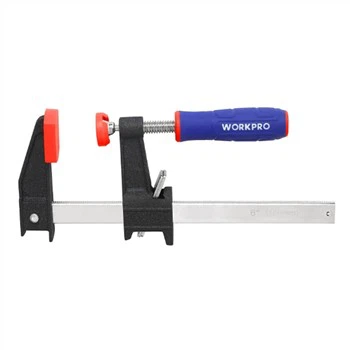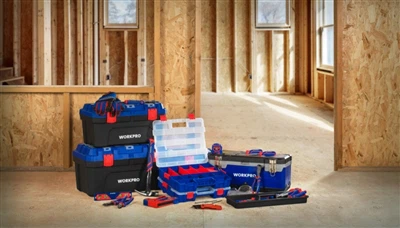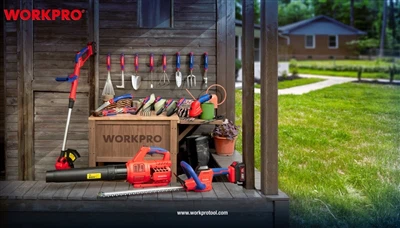I started writing about this subject yesterday, and it quickly became far too long for a single post. So today comes the second half of my novella on hand tool storage. Return to Part 1 by clicking here.
Wooden toolboxes, as described in yesterday's piece, have been around for hundreds of years. Dovetailed joiners and cabinet builders' tool cabinets are a common type of hardwood tool chest. From the turn of the 18th century, this shape becomes more widespread. This cabinet was ideal for transporting tools to seminars or demos as well as keeping specialty tools and excess. The chest was precisely sized and even completely laden, I could lift it into the back of my car by myself.

This is my tiny green tool chest was an excellent solution for transporting my gear. It was just the right size for what I needed for classes. It wasn't so large that I couldn't move or raise it. But, I did not utilize it to keep all of the instruments I used regularly while I was not travelling. In this chest, I solely kept overflow and occasionally used specialist instruments. Regularly used tools were kept separate. My family and I then sold our house in 2015 and moved to our current location. My previous shop, while modest, was climate controlled. My shop had to be relocated to a drafty old shed on our new property. First, I attempted to repurpose the wall-hanging tool boards from my previous shop (more on those below). I immediately discovered, however, that a drafty, ancient structure equals dampness and rust for ferrous objects. I needed a better way to store my valuable hand tools. The smaller joiner's tool chest simply couldn't hold all of my tools. So, I decided to construct a full-size toolbox. For the past six years, I've been working only from this chest. In general, it's a satisfactory storage option. The tools are shielded from dust and rust in the air. It's reasonably orderly, albeit the tills sometimes become disorganized (more on that below). I can see how a locked chest like this would be ideal for a shared-period workshop.

In 2016, I made this full-size tool cabinet. Since then, it has served as my sole means of storing hand tools. It's massive (No. 4 smoothing plane for size) and vast. When it's empty, I can hardly lift it. Two strong adults can barely lift it when completely loaded.
But these cabinets are not without their drawbacks. First and foremost, full-size tool chests are everything from portable. If my chest wasn't on casters, it would be immobile while fully loaded with tools. I can move it around on casters. When this chest is full, however, it takes two strong adults to carry it off the ground.

For this photo, I ordered the top till of the cabinet. It appears to be neat here. In a week, it will resemble the image below. The No. 8 jointer at the bottom of the chest should give you an idea of how big this monster is.
My third pet peeve is keeping my most often used planes and saws in the bottom of my cabinet. I'm meant to work by taking out the tools I need and keeping them on the bench. This is not how I can work. I dislike having a jumble of tools on my workbench. They get in my way, and I knock them to the ground, injuring them. When I'm not using my tools, I like to store them safely. The bottom of a chest is a bad location to keep tools the way I work.
I mark a board and then saw it when I'm breaking down lumber. Then I marked the second board and noticed it. When I finish sawing a board, I like to put the saw away and mark the next board. Then, while I'm sawing, I put the square and pencil away. When your tools are stowed at the bottom of a chest, this is a terrible way to work.
This is how the tills in this chest generally appear. When the tills are relocated, the tools are heaped on top of one other and rattle around and bang into each other. Similarly, when I plan a board's rough-sawn face, I start with the jack plane and then transition to the try plane. I also frequently examine the board with winding sticks. I can leave both planes and the winding sticks on the benchtop if my boards are tiny. Nevertheless, if the boards are larger, the tools I'm not using get in the way. I know I should keep unneeded tools on the shelf beneath the bench when not in use. Yet, that shelf is already overflowing with junk, leaving no room for the plane and winding sticks. So they return to the box till I am ready for them. Once again, this is inefficient.
I adored my tiny tool cabinet for extras and specialized instruments. My primary tools were hanging on hooks and sat on wall shelves back then. I wasn't using the tool cabinet every day. But, after 6 years of routinely working out of the full-sized cabinet, it's not my favourite configuration. Some people enjoy working out their chests. I'm simply not one of them.
Tool Cabinet
in the Dutch Style According to Christopher Schwarz and Megan Fitzpatrick, the Dutch tool cabinet has become a popular solution in recent years. The shape is likely to be as old as, if not older than, the typical English tool chest. I have no firsthand knowledge of this form. Yet, it should have identical advantages and disadvantages to the English box in theory.
For starters, because it is a closed system, it will help avoid dust from resting on the tools, reducing corrosion. Second, it should remain quite well organized. Most examples I've seen are far more structured than an English toolbox. One of the reasons for this, I believe, is that they lack the sliding tills of an English cabinet. These boxes appear to be far more portable than a full-sized English box.
On the negative side, they are fairly little in size. While I'm sure they can hold a lot of tools, their walls only have so much space. If the kit's capacity is exceeded, more storage solutions are necessary. Also, while I've never worked out of one, I imagine it's not much more convenient than an English box.
These boxes are an intriguing and promising choice for smaller equipment that needs to be portable, in my opinion. I believe that many woodworkers would agree with me based only on their popularity. In the not-too-distant future, I intend to play with the design myself.
Hand Tool Cabinets on the Wall
Stylish wall-mounted hand tool cabinets are a relatively new design. The most renowned example of a wall-hung hand tool cabinet is one made in the late 1800s by H. O. Studley. Many woodworkers nowadays aim to design their own fantasy hand tool cabinets. When it comes to organization, wall-hung cabinets outperform floor chests. Most wall-mounted tool cabinets include bespoke tool hangers and holders to keep the tools safe and secure. Because the tools are mounted on the wall, they are also at a more convenient height to reach than a floor chest. While the tools are not being utilized, the door can be closed to keep dust from settling.

Nevertheless, that is where the utility of the tool cabinet ends for me. A tool cabinet's negatives, in my opinion, outweigh its benefits. First and foremost, the wall-mounted tool cabinet is not movable. Even if it's mounted on a French cleat and readily removed from the wall, it's not portable.
Second, it is difficult to alter or grow. This could be useful if you're happy with your present kit and don't want to replace it. If you wish to add tools to the cabinet later, you must prepare them when building it. This is not always an easy task. Several woodworkers experiment with various areas of the craft. When you make the cabinet, for example, you may not be interested in chairmaking. If you wish to experiment with chairs in the future, your cabinet may not be able to fit the extra tools. The doors are the third thing I despise about tool cabinets.
The doors may be less of an issue if you hang your cabinet away from your countertop. Cabinet doors, on the other hand, are extremely inconvenient if the cabinet is directly above your workbench. If you're constructing on the workbench and need to open the cabinet doors, you must move the glue up. After the doors are open and you're finished for the day, you must move the glue up to close them. If you don't close the doors, the cabinet won't keep dust from collecting on the tools.
Some woodworkers adore their tool cabinets, seeing them as more than just a place to keep their equipment. They utilize them to demonstrate not only their tool collection but also their expertise with those tools (see the tool cabinet built by my friend Shannon Rogers for an example). They spend many hours planning and creating their temple out of pricey, exotic materials. I can't criticize these pieces of art for what they are - they can be stunning. Yet, from a functional standpoint, a tool cabinet does not appeal to me.
Storing Hand Tools on the Wall
Putting hand tools on the walls is an older way of storage than any of the options discussed above. But I didn't truly appreciate wall storage until we moved into our third home. As previously said, floor space was limited when I first moved into the Logan Cabinet Store in 2005. My workbench took up around 20% of the available space in the room, which was only 7 feet by 13 feet. But, aside from the door, there was just one little window, leaving lots of wall space. So, I did what many pre-industrial enterprises did and put my tools on the wall.

I used this technique for nearly ten years and appreciated how convenient it was. Shallow racks, such as those for chisels and gouges, were hung low to facilitate access. Saws were conveniently attached on hooks, allowing for quick and easy removal and replacement. A deeper storage shelf was positioned high to avoid interfering with the work on the benchtop. At the moment, it was the ideal option for me.
Yet, like with any solution, wall storage isn't the be-all and end-all for everyone. The disadvantages of storing tools on the wall are also present. The tools will first become dusty. Dust is even worse if you use machinery and power tools in the space, particularly sanders and a table saw. But, even in a hand tool-only shop, the hand tools will become dusty. Utilizing the instruments regularly alleviates the majority of the issues that can arise. The tools that aren't used frequently are cleaned with an oiled towel regularly.
Another disadvantage of wall storage is the amount of space it takes up above the bench. If your bench is against the same wall as your tools, this can be an issue. As previously stated, I dislike wall cabinets with doors for this reason. Keep the lower storage as shallow as feasible to accommodate the space requirement. The tools should not protrude from the wall any further than 6 inches. The third complaint concerning wall storage is the need to leave the bench to obtain and replace tools. This one doesn't make sense to me. It's not a problem unless your workshop is enormous and your workbench is distant from the wall. All I have to do with my current arrangement is turn around and the tools are right there. If you have to walk that far to get to your hand tools, you might consider moving your workbench closer to the tools.
The primary issue I have with wall storage is that it is not at all moveable. I conduct seminars and occasionally travel to do demos. I can't bring a wall of tools with me. Therefore I'll need to find another way to transport my tools. The tiny English tool chest is an excellent choice for this.
My Current Solution for Storing Hand Tools
After years of experimenting with various approaches, I believe I have finally found my preferred method for storing hand tools. My overall opinion is that there is no one perfect answer for every tool or shop. With this in mind, I've been reorganizing my hand tool storage to better suit my current workshop and tool kit.
The hand saws and planes were the first tools I opted to tackle. I used to adore having the saws and planes on the wall so close to my workbench in my previous shop. They were simple to obtain and return to between uses. For my work habits, wall storage for this equipment is as much about staging as it is about storing. So, I made a new till for my handsaws and shelving for my planes.
My toolbox appears to be in perpetual flux. I prefer open shelves, simple pegs, and easily reconfigurable wall storage. I'm still working on my smaller tools, such as squares, marking gauges, chisels, and boring tools. I have a basic plan for those types of tools, but it will necessitate some workbench modification. That is a subject for another day. Concerning the portability issue, I still need to address it. I'll be teaching some sessions this spring and will need to bring a small tool kit to school with me. My small English toolbox was ideal for these types of journeys, but I've since sold it. But I believe I will make use of the chance to construct a modest Dutch-style tool chest for experimentation. While the English chest was adequate, I believe the Dutch version offers more room for organizing.










